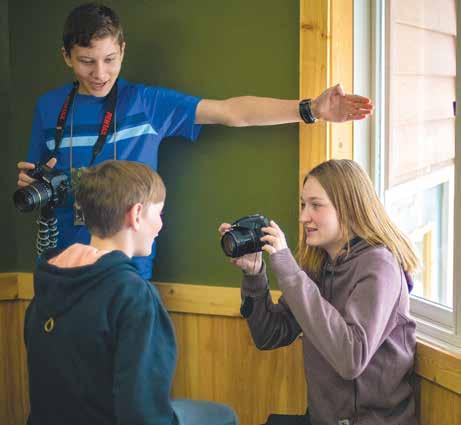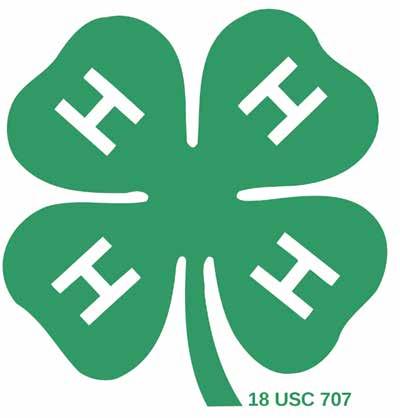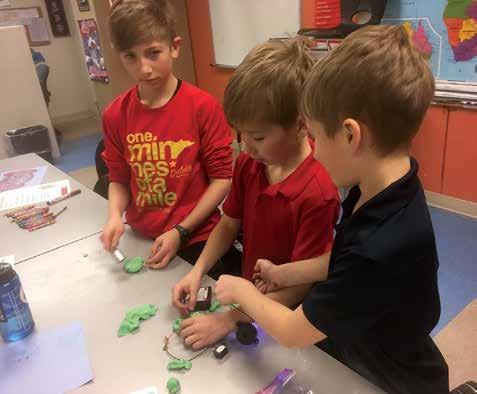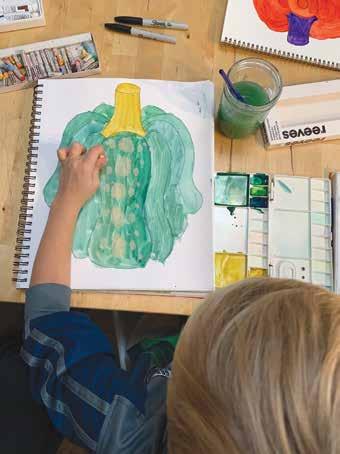
3 minute read
4-H: Connecting youth with their passions
By Andrea Busche
Whenwe hear the name “4-H,” many of us automatically think of children displaying livestock in a barn at the local fair. While it’s true that the organization has deep roots in agriculture, today’s 4-H offers so much more.
So, what is 4-H? In a nutshell, 4-H is an out-ofschool, hands-on learning program for people ages 5-19. Youth participants choose a project that’s interesting to them and explore it, along with their peers and caring adults.
Details
“4-H is a youth development organization supported by volunteers,” said Rebecca Meyer, who is an extension educator with the Center for Youth Development at the University of Minnesota Extension; 4-H falls under the University of Minnesota Extension’s umbrella.
In addition to her professional role with the group, Meyer is also a 4-H leader, volunteer and parent. Her own three sons are deeply involved in the organization, and Meyer herself leads a 4-H club called Riptide Spies.
“4-H is really about connecting youth with their passions,” she said. “There are many different topics of interest, such as computer science, creative arts, biology, STEM topics, animals, and more. 4-H tries to pair youth with their interests, along with providing caring adults to help them.”
4-H clubs meet regularly across the country, including in every part of Minnesota. South Saint Louis County alone offers five clubs, plus after-school programs. Currently, 170 youth are 4-H members in our area.
In addition to clubs, 4-H offers many other modalities, including training sessions, camps, special projects and leadership events. The youth learn public speaking and presentation skills through exhibiting their projects at a variety of venues, such as art galleries and fairs. And yes, animals and livestock are still a big part of the organization; some of the youth choose to raise animals and display them at local and county fairs.
History
4-H goes back to the early 1900s, when A.B. Graham started a youth program in Clark County, Ohio, in 1902. This is considered the birthplace of 4-H in the United States. The first club was called “The Tomato Club,” or the “Corn Growing Club.”
Minnesota was one of the first states to get in on the fun. T.A. Erickson of Douglas County, Minn., started local agricultural after-school clubs and fairs that same year. Jessie Field Shambaugh developed the clover pin with an H on each leaf in 1910, and by 1912 the groups were officially referred to as 4-H clubs.
The name 4-H refers to the occurrence of the letter H four times in the organization's original motto, featuring the words “head, heart, hands and health.” These four words are still used in the group’s pledge to this day.

Topics
When it comes to topics youth can explore in 4-H, the sky is really the limit. 4-H offers learning experiences in science, photography, agriculture, healthy living, civic engagement and much more. 4-H offers one-day events, year-long projects and everything in-between. There are many ways to try 4-H.

Meyer’s three sons each pursue their own individual interests through 4-H. Evan, 14, enjoys theater, comedy, and outdoor activities such as paddling and hiking. Evan is also a 4-H STEM Ambassador and a participant in a program called The Incredible Exchange. Through both efforts, he is engaged in sharing his interests in science and engineering through teaching younger youth.
Isaac, 10, plays guitar and enjoys projects that include engineering and “tinkering.” And, Isaac’s twin brother,
Continued on page 46
Nolan, enjoys drawings, watercolor painting, and playing piano, as well as composing music. He also likes to learn about chemistry and chemical reactions.
Meyer shared that 4-H is a great way for family members to each pursue their own interests, while keeping the number of activities per child to a manageable level.

“We’re a busy family, so finding time to pursue all the things we’re interested in can be challenging,” she said.
Values and pledge
Meyer explained that 4-H is a great place for youth to build character and learn quality values as they grow. 4-H focuses on four overarching elements, including: belonging, independence, mastery and generosity.
“We also teach skills that are especially important in the 21st century, such as collaboration, communication, creative thinking, creativity, and building relationships,” she added.
4-H has its own unique pledge, which states: I pledge my head to clearer thinking, my heart to greater loyalty, my hands to larger service, and my health to better living, for my family, my club, my community, my country and my world.
Open to everyone
4-H is open to any youth, aged 5-19, who want to join. While there are some costs involved, there are scholarships available. 4-H also holds fundraisers to help offset some of the expenses for families in need.

The group is always looking for volunteers.
“We’re always looking for caring adults who want to share their skills and passions with youth,” Meyer said. “Once, a parent came to a club meeting and talked to the kids all about fishing – how to tie knots, what lure to use, etc. So, the topics covered can really be about anything.”
Rewarding for youth and adults alike


Meyer is passionate about the benefits of 4-H, and believes the skills and lessons learned contribute mightily to the positive development of young people.

“I really enjoy seeing them learning,” she said. “The kids are smiling, and they’re really engaging with the topics. There’s a lot of laughter and positive camaraderie, all while they are learning something of interest to them.”
For more information, please visit extension.umn. edu/4-h/about-4-h. D
Andrea Busche is a Duluth freelance writer.
By Alison Stucke










